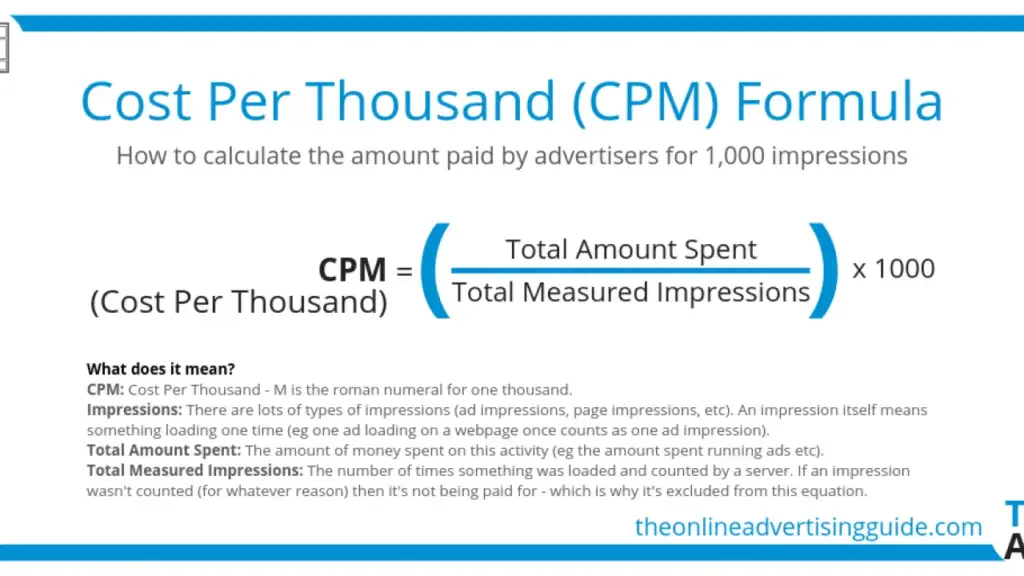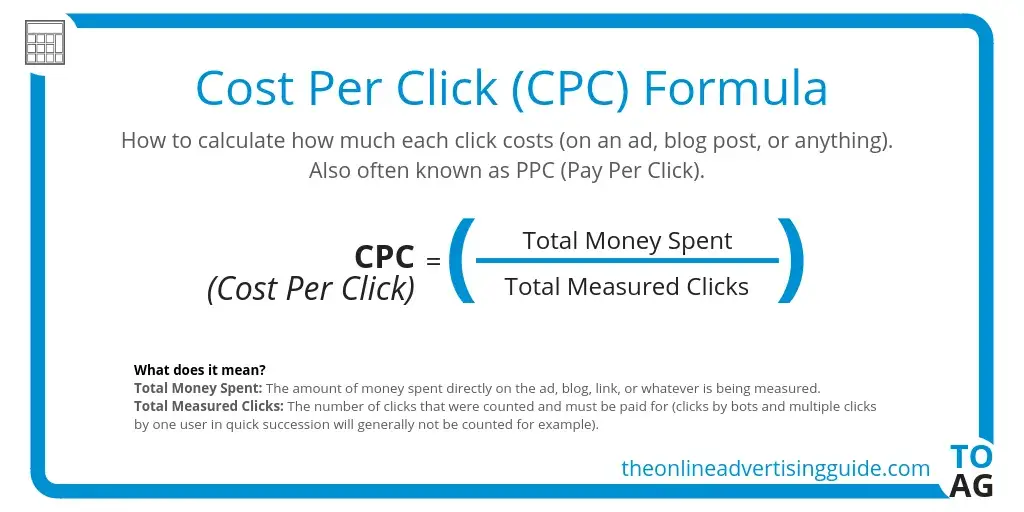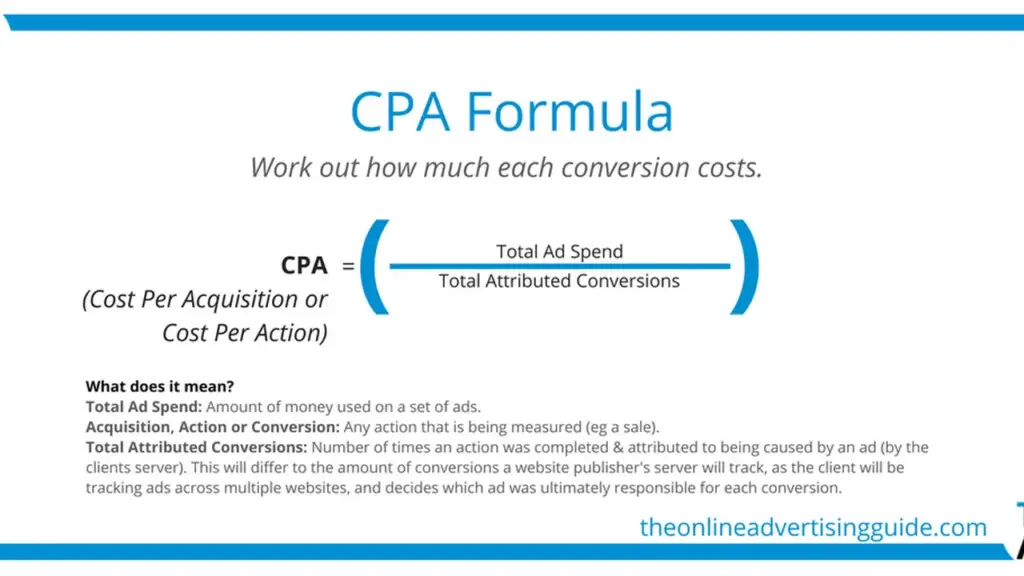
CPM, CPC, and CPA: What Are They And How Are They Different?

Get helpful updates in your inbox
CPM, CPC, and CPA are all metrics that are associated with advertiser costs.
They are defined as:
- CPM: cost per mille (thousand) visitors
- CPC: cost per click
- CPA: cost per acquisition
But publishers might be wondering: what is the significance of these metrics and how are they different?
Additionally, the full video explaining the difference between CPM, CPC, and CPA is below.
What is CPM?
CPM is a metric for advertisers that allows them to reach a large number of people at once, and it doesn’t require anyone to click on anything. Due to this large reach, CPM can be good for brand awareness.

CPM is based on a cost-per-impression system. An impression is when a user sees an advertisement.
CPM can cost the advertiser anywhere from a couple of cents to thousands of dollars. It all depends on how valuable that ad location is, depending on its target audience and that specific website’s traffic and content.
CPM pros and cons
Pro: Predetermined payment amount
Pro: Is a predictable income stream for publishers
Pro: Publisher can easily see value delivered to advertisers
Pro: Cheapest for advertisers and low risk
Con: Not a good metric for publishers to guage how successful their site is because CPM does not show you what you’re entire site is actually worth. It just shows what advertisers are willing to pay.
What is CPC?
CPC is a metric for websites. It’s possible to set a maximum budget in CPC campaigns so that when the agreed number of clicks is reached, the advertisement will no longer show.

CPC can collect data on visitors who clicked on certain ads to better understand what deals they should invest in in the future.
CPC pros and cons
Pro: There is small risk for advertisers using CPC.
Pro: CPC is a more measurable investment for advertisers.
Con: Can be less predictable.
Con: Visitors clicking advertisements will take them away from. your website, which you don’t want as a publisher.
One thing publishers have to keep in mind with CPC is that they have to really understand their audience. This knowledge is crucial to putting the right ads on the right pages of their websites so people will click on them.
What is CPA?
CPA is ‘cost per acquisition’, and it’s also called pay-per-performance (PPM). CPA tends to be the worst for publishers specifically. Affiliate ads work in a very similar way as CPA.

Important: CPA is the least amount of risk to advertisers, but the highest amount of risk for publishers.
CPA pros and cons
Con: Publisher only gets paid if a user clicks and performs a certain action, like purchasing an item.
Con: You will need to spend more time and have expertise towards making sure that the ad leads to a completed action.
Your content oftentimes has to be well-tailored to the ad present on the page for these to succeed.
As a result, CPA is a high-risk, high reward for publishers. These types of deals are ideal for advertisers.
Why EPMV is the superior metric to understanding ad revenue
EPMV stands for earnings per mille (thousand) visitors. The formula for EPMV is:
Total revenue / (total sessions / 1000) = EPMV

EPMV pros and cons
Pro: Reliable metric for revenue made by publishers per 1,000 visits
Pro: Accounts for the impact of UX on revenue, like multiple page views, time on site, scroll depth, and bounce rate
Pro: Can be used to measure all revenue sources, not just advertising impressions
There’s no real con to using EPMV. But if anything, using EPMV as the metric to track revenue across is a bigger benefit to publishers than it is advertisers.
When you rely strictly on CPM, CPC, or CPA, it doesn’t paint the full picture of your total revenue across all sessions. Additionally, scammy players in the ad ops industry might try to use a single metric like CPM that’s underperforming to offer their services to you.
These people want to capitalize on the value you created with your audience. They try to find publishers’ weak spots so they can turn around and charge you a lot of money to “fix or improve” whatever it is they’re telling you is an issue. But it’s important to remember to avoid these scammy types, especially if they are vague in describing what the work they provide will look like. There’s nothing worse than shelling out hundreds or even thousands of dollars to someone who is trying to take advantage of publishers who are new to learning SEO.
Furthermore, if you want to understand the ins and outs of EPMV and how it’s a crucial measure of true total earnings, watch the video below.
Wrapping up CPM, CPC, and CPA
It’s important to remember that CPM, CPC, and CPA are just metrics. And like all metrics, they are tools. Some of these tools are more beneficial to advertisers than they are publishers, like CPA (better for advertisers) vs. CPM (better for publishers).
While CPM, CPC, and CPA are all associated with advertiser costs, knowing what makes them different can be a big benefit. Additionally, publishers who use Ad Tester automatically harness the power of machine learning to improve UX and ad revenue over time.
Publishers can see EPMV across content categories, geographic location, by article authors, and more using Big Data Analytics.

Do you have any questions on CPM, CPC, and CPA? Let me know in the comments

Allen is a published author and accomplished digital marketer. The author of two separate novels, Allen is a developing marketer with a deep understanding of the online publishing landscape. Allen currently serves as Ezoic's head of content and works directly with publishers and industry partners to bring emerging news and stories to Ezoic publishers.
Featured Content
Checkout this popular and trending content

Ranking In Universal Search Results: Video Is The Secret
See how Flickify can become the ultimate SEO hack for sites missing out on rankings because of a lack of video.
Announcement

Ezoic Edge: The Fastest Way To Load Pages. Period.
Ezoic announces an industry-first edge content delivery network for websites and creators; bringing the fastest pages on the web to Ezoic publishers.
Launch

Ezoic Unveils New Enterprise Program: Empowering Creators to Scale and Succeed
Ezoic recently announced a higher level designed for publishers that have reached that ultimate stage of growth. See what it means for Ezoic users.
Announcement
